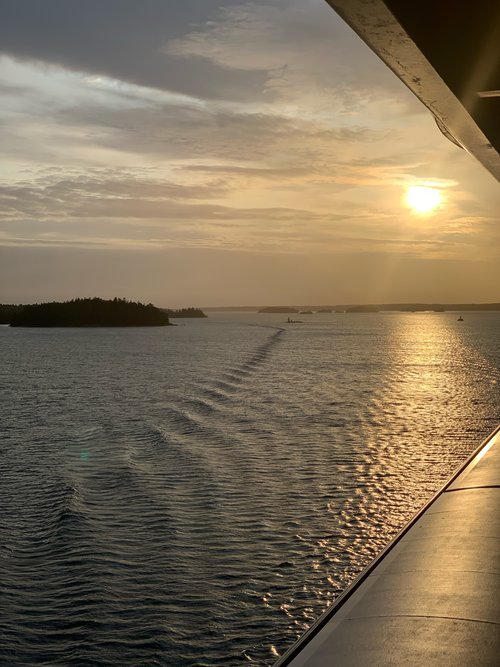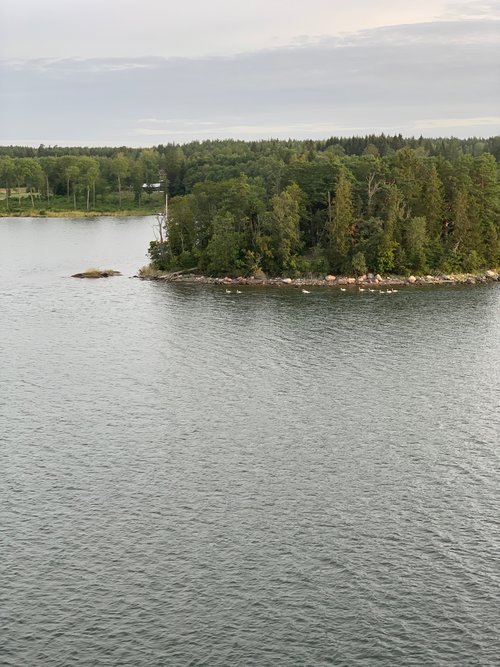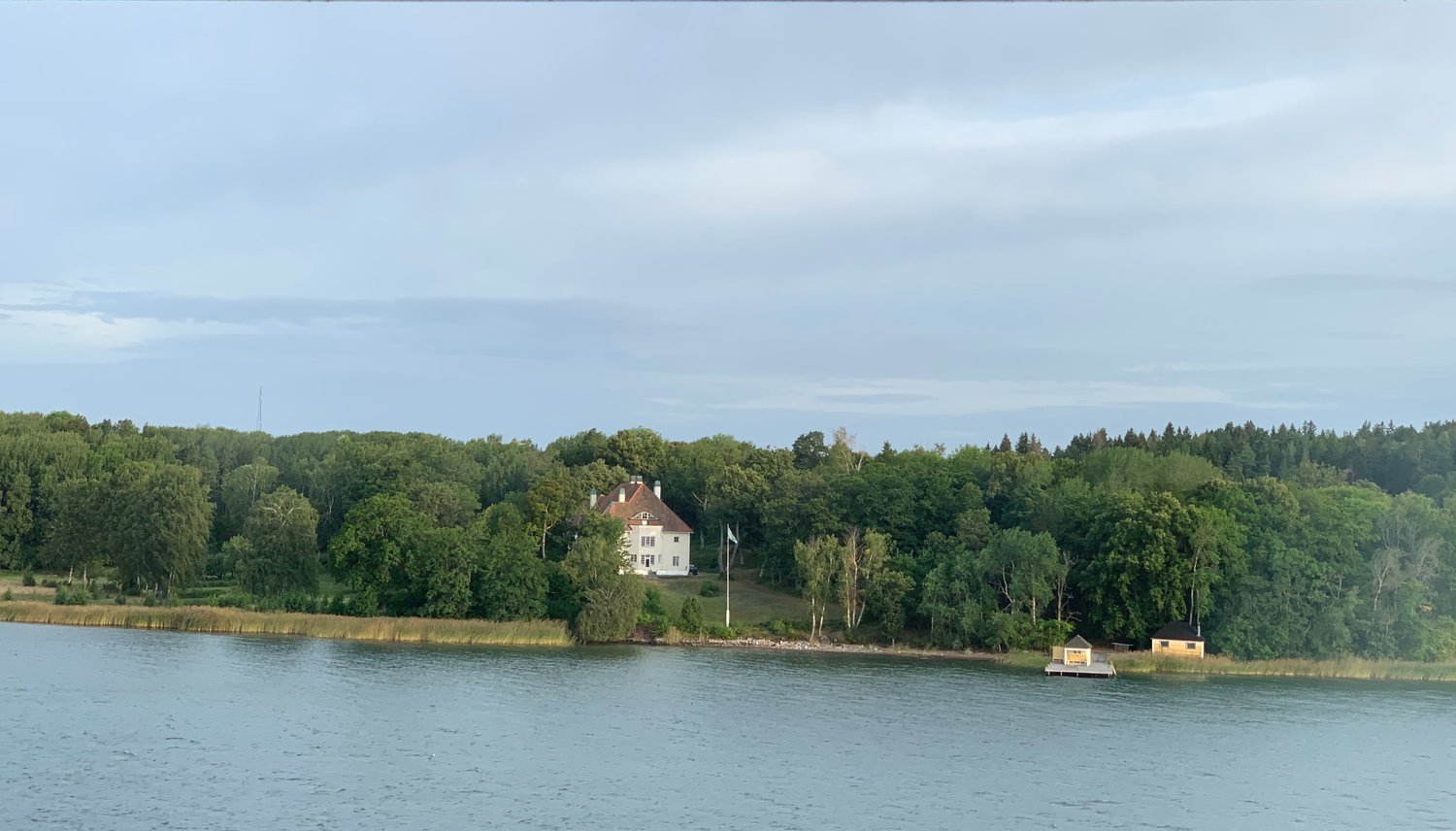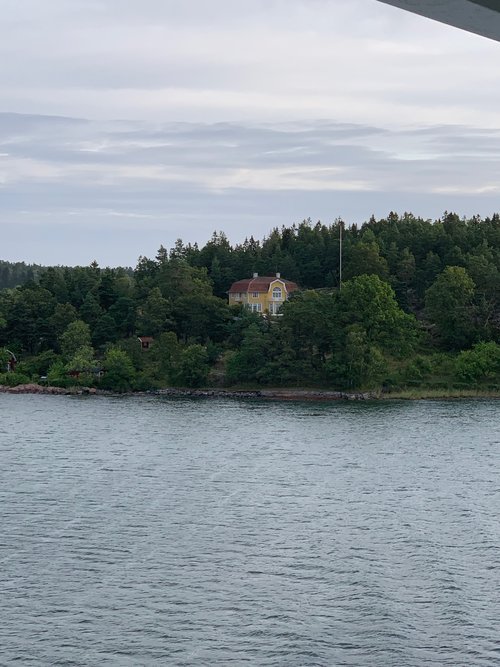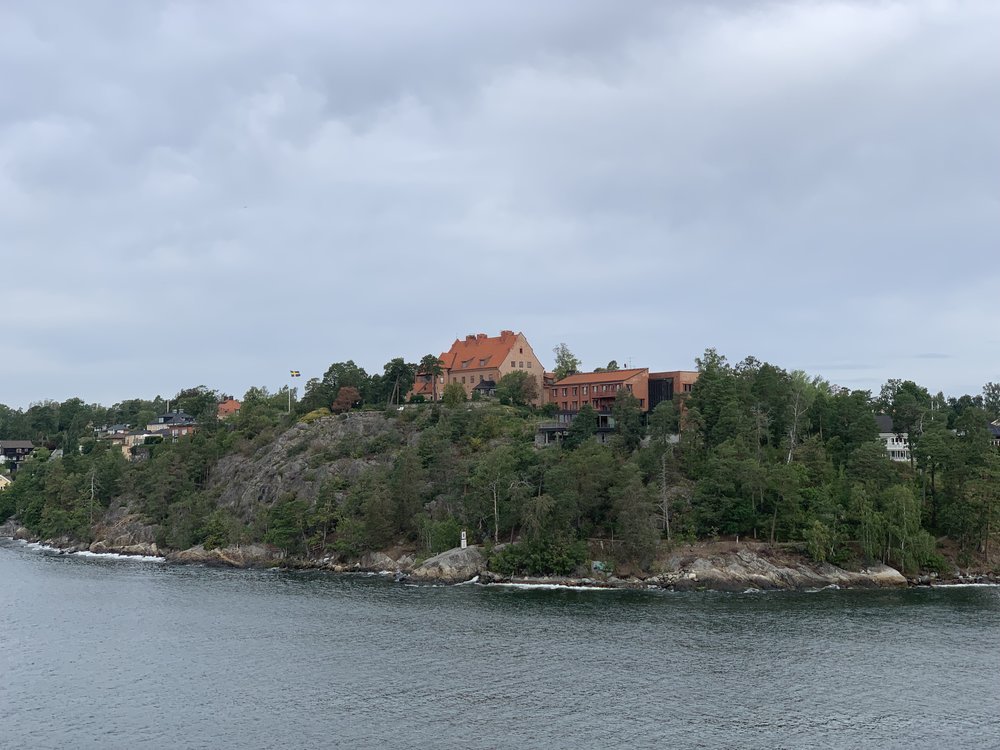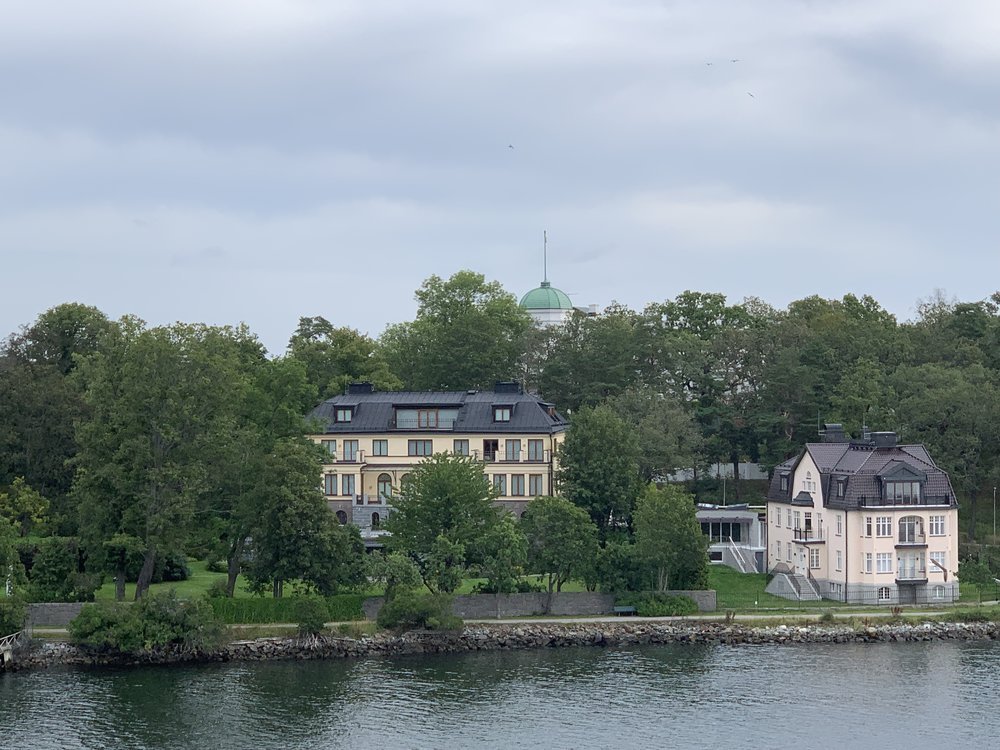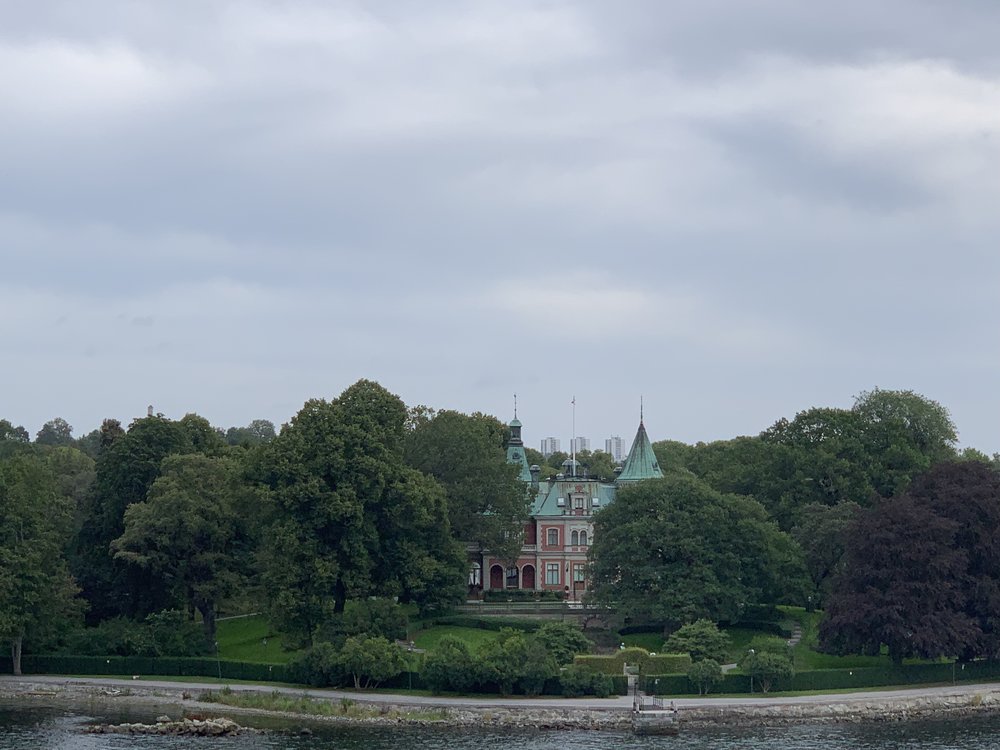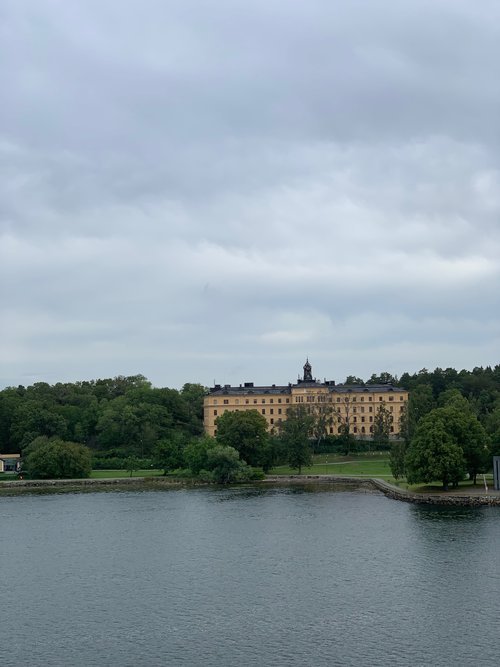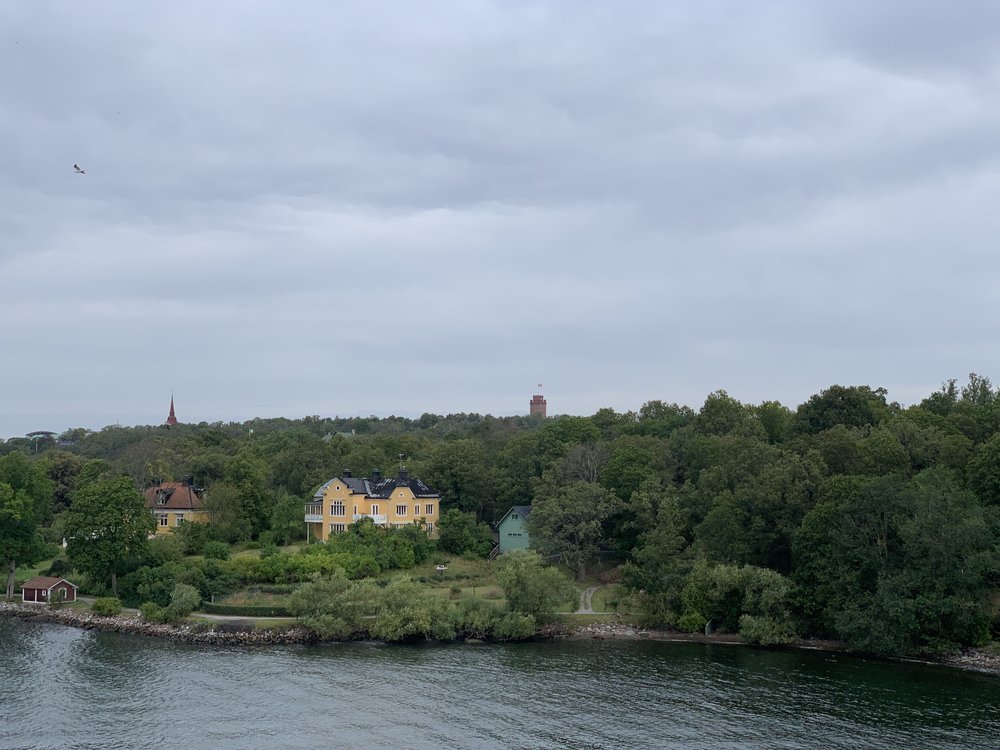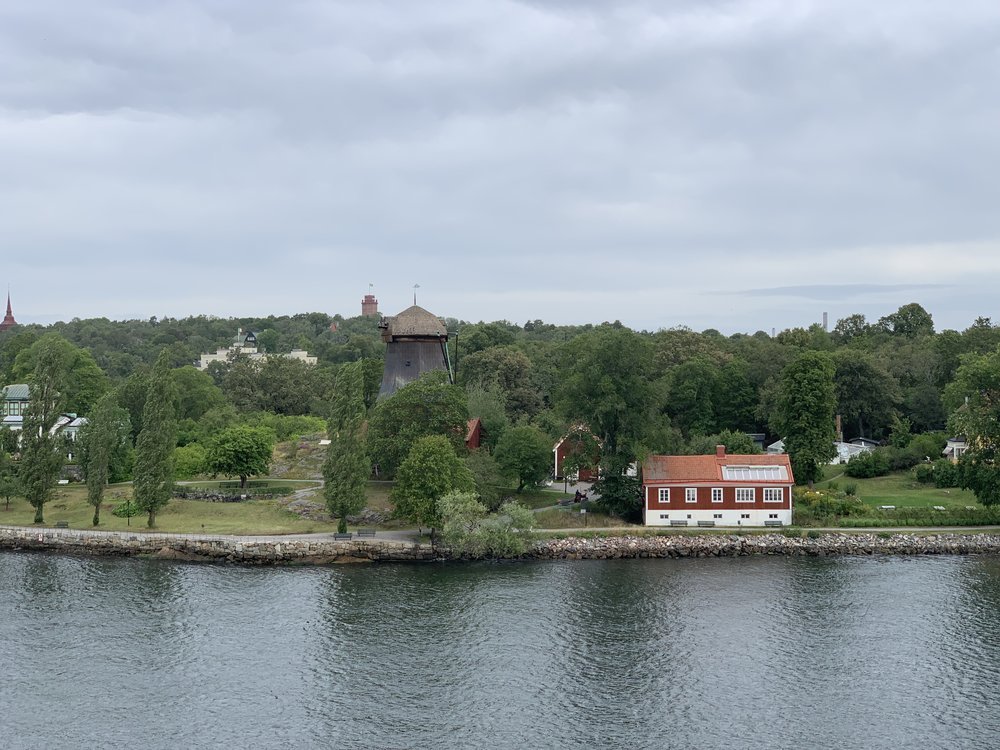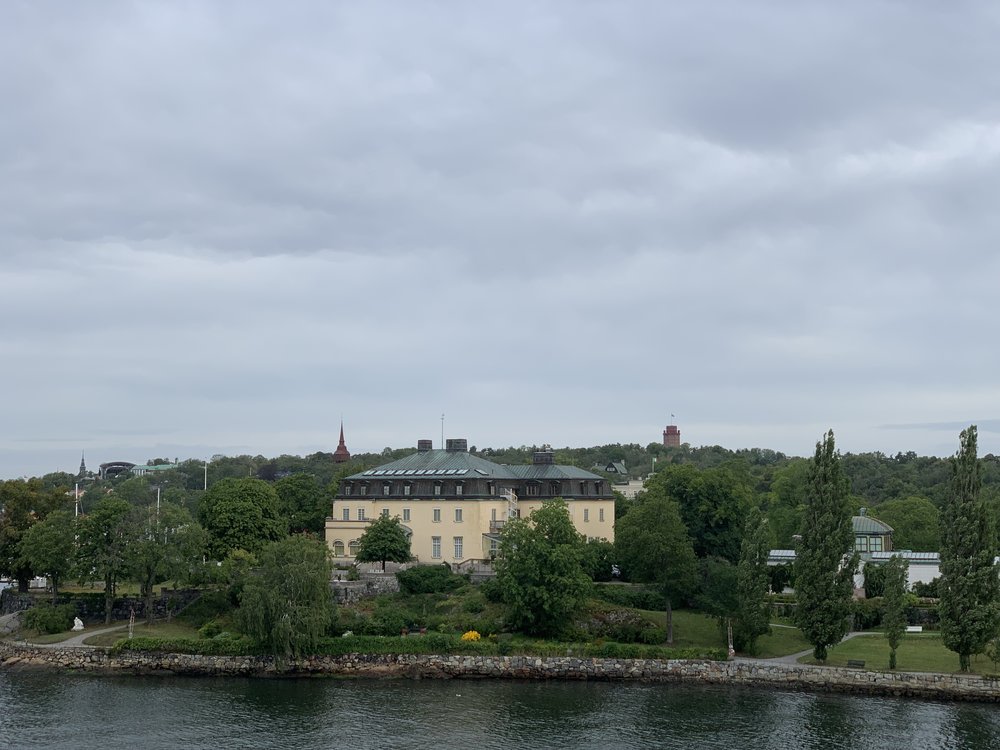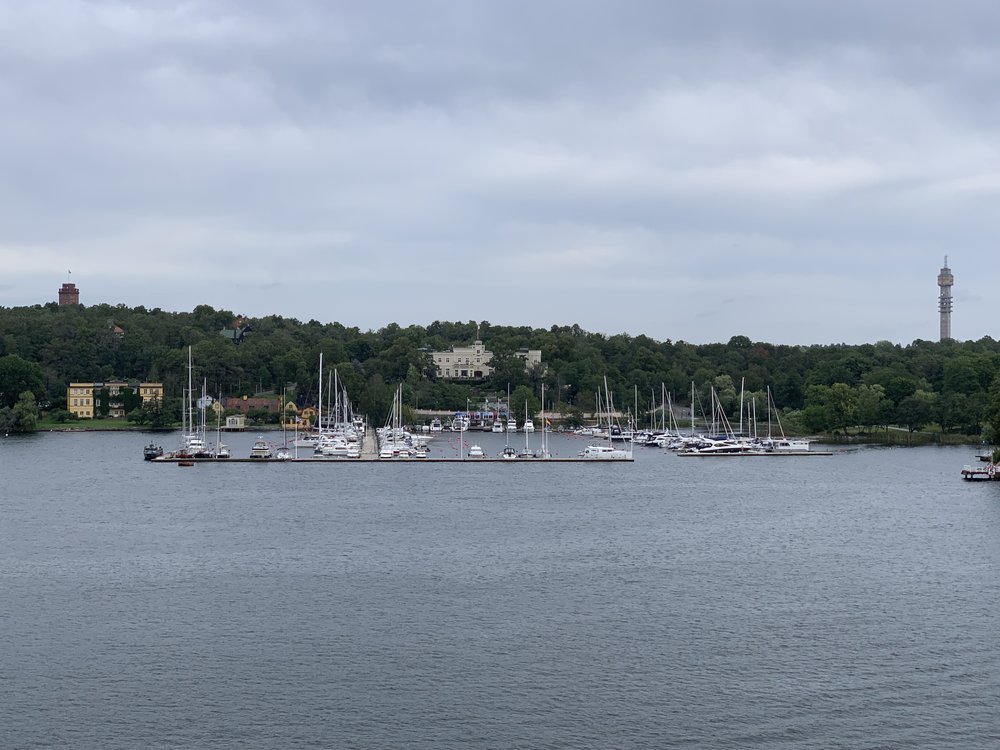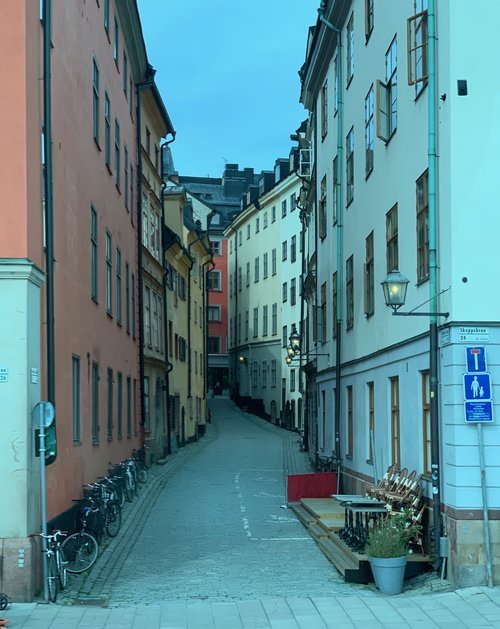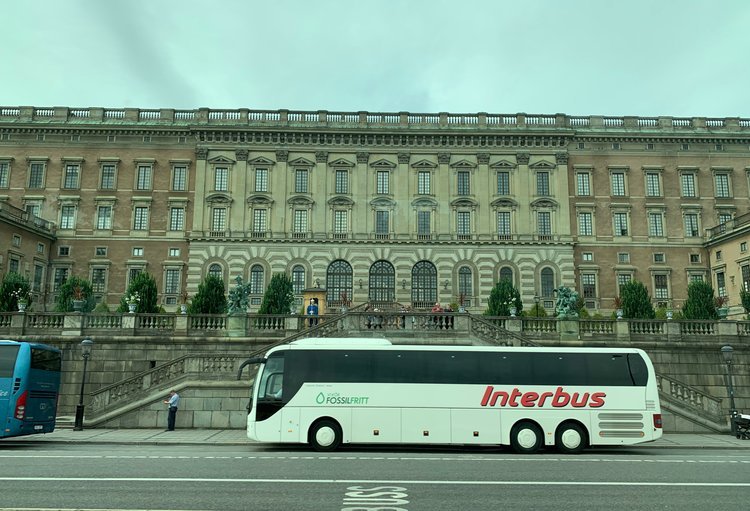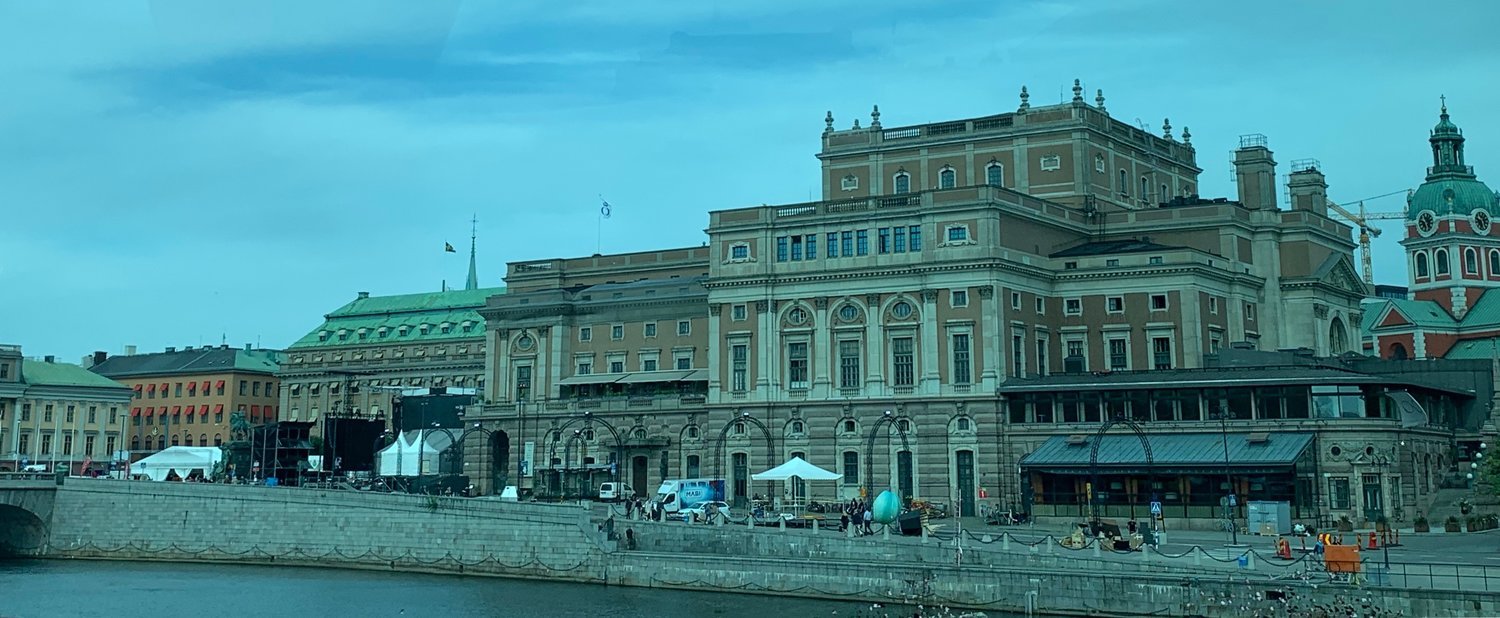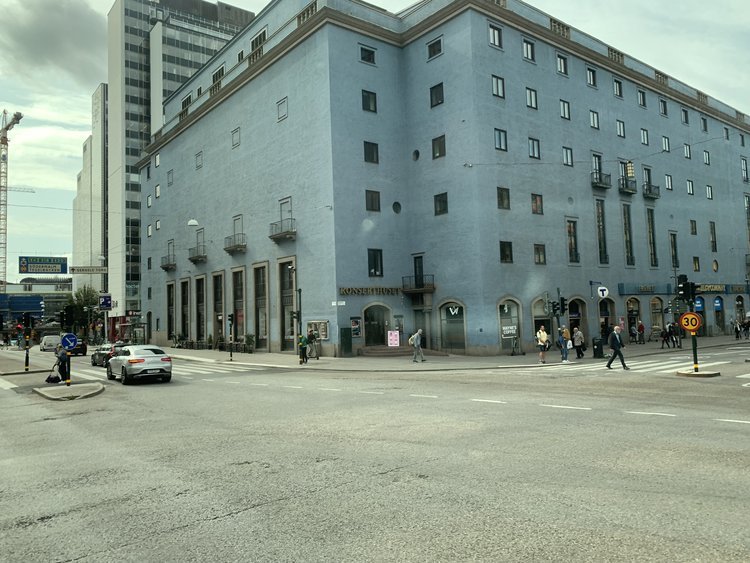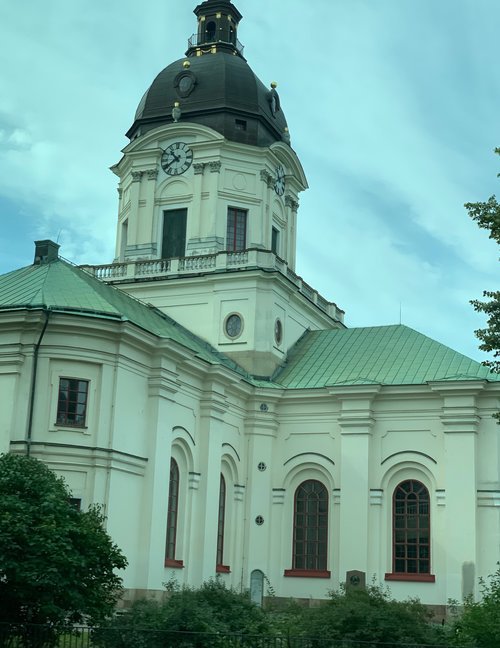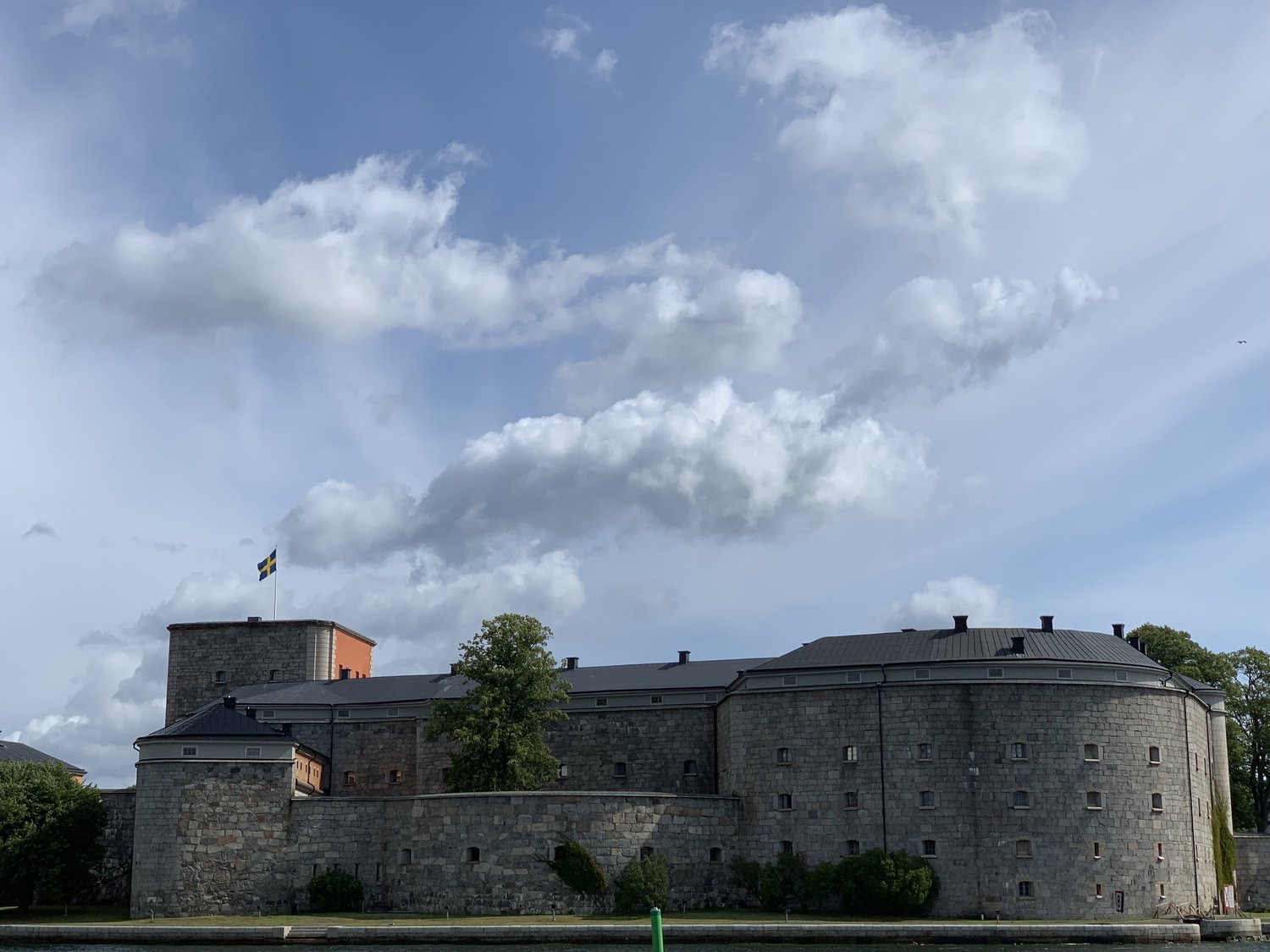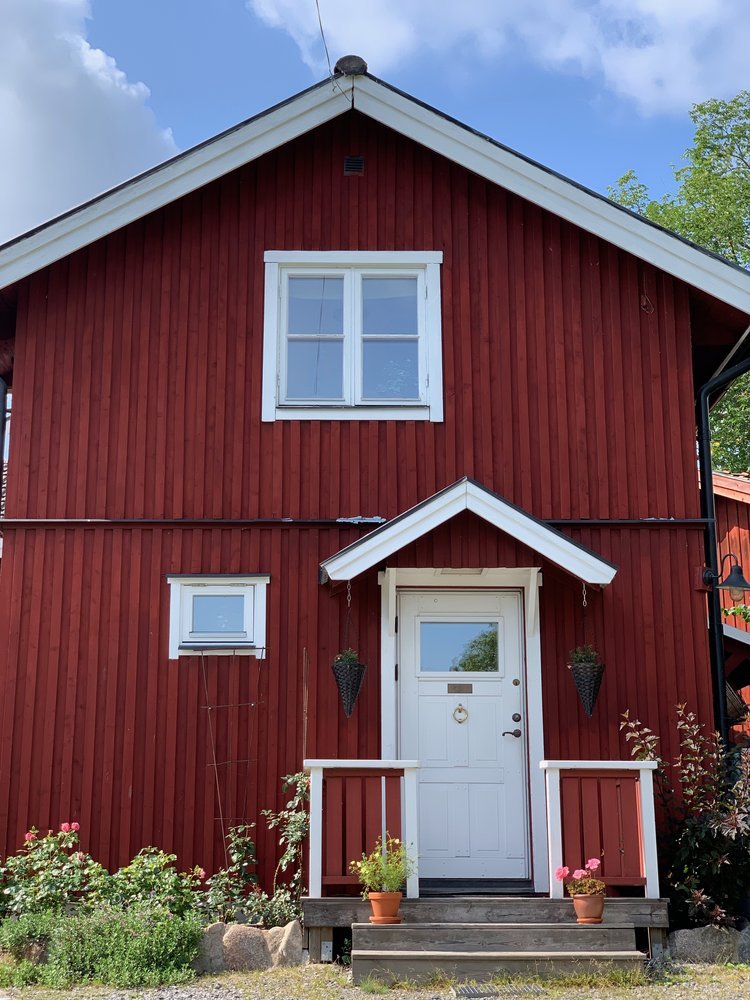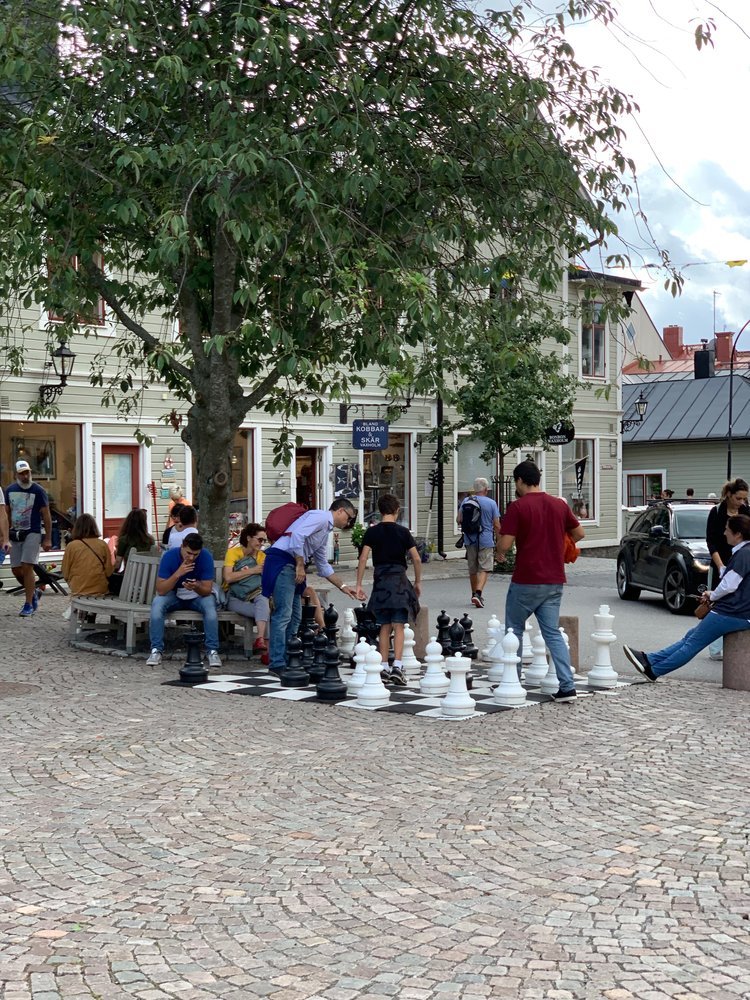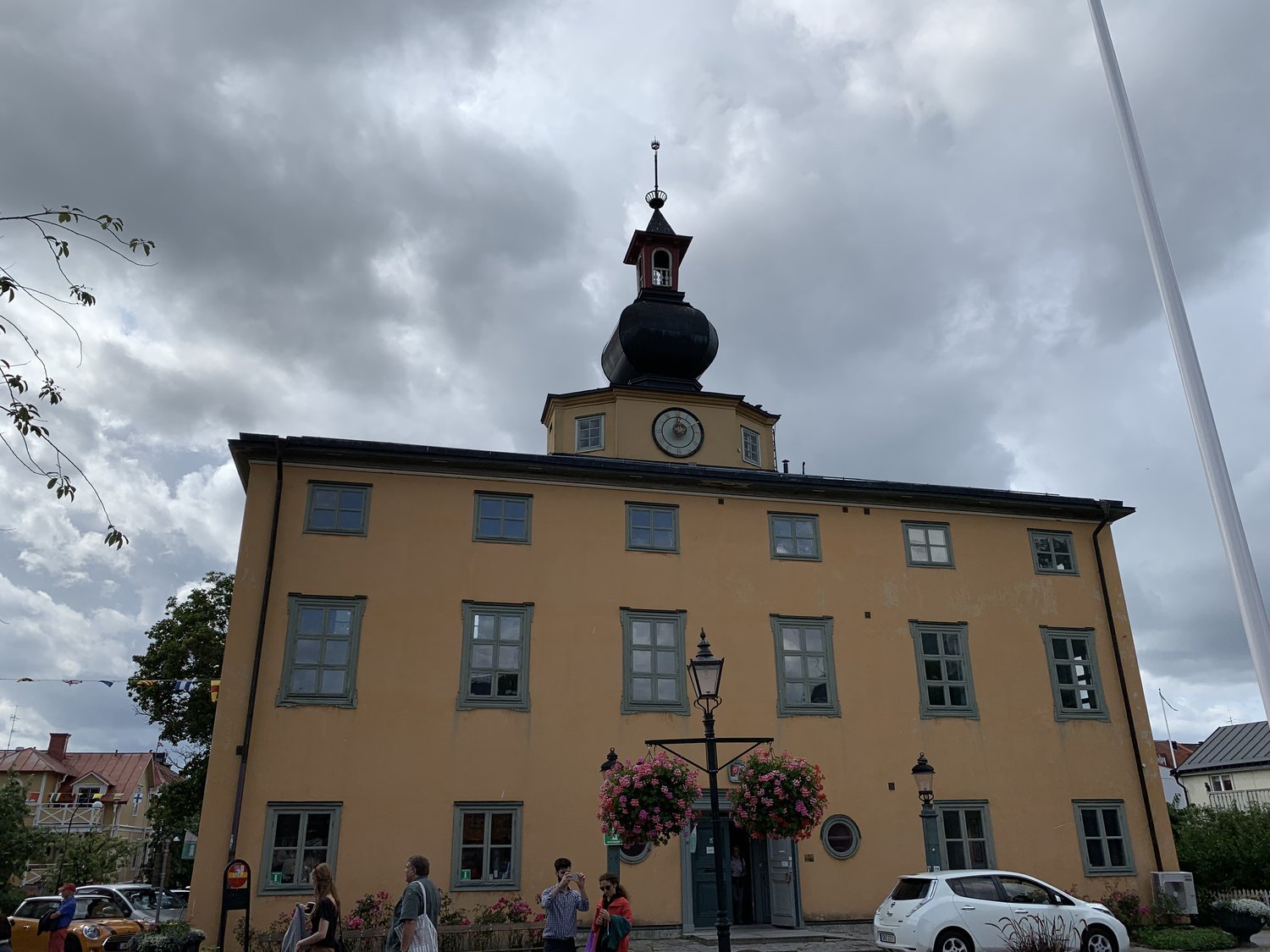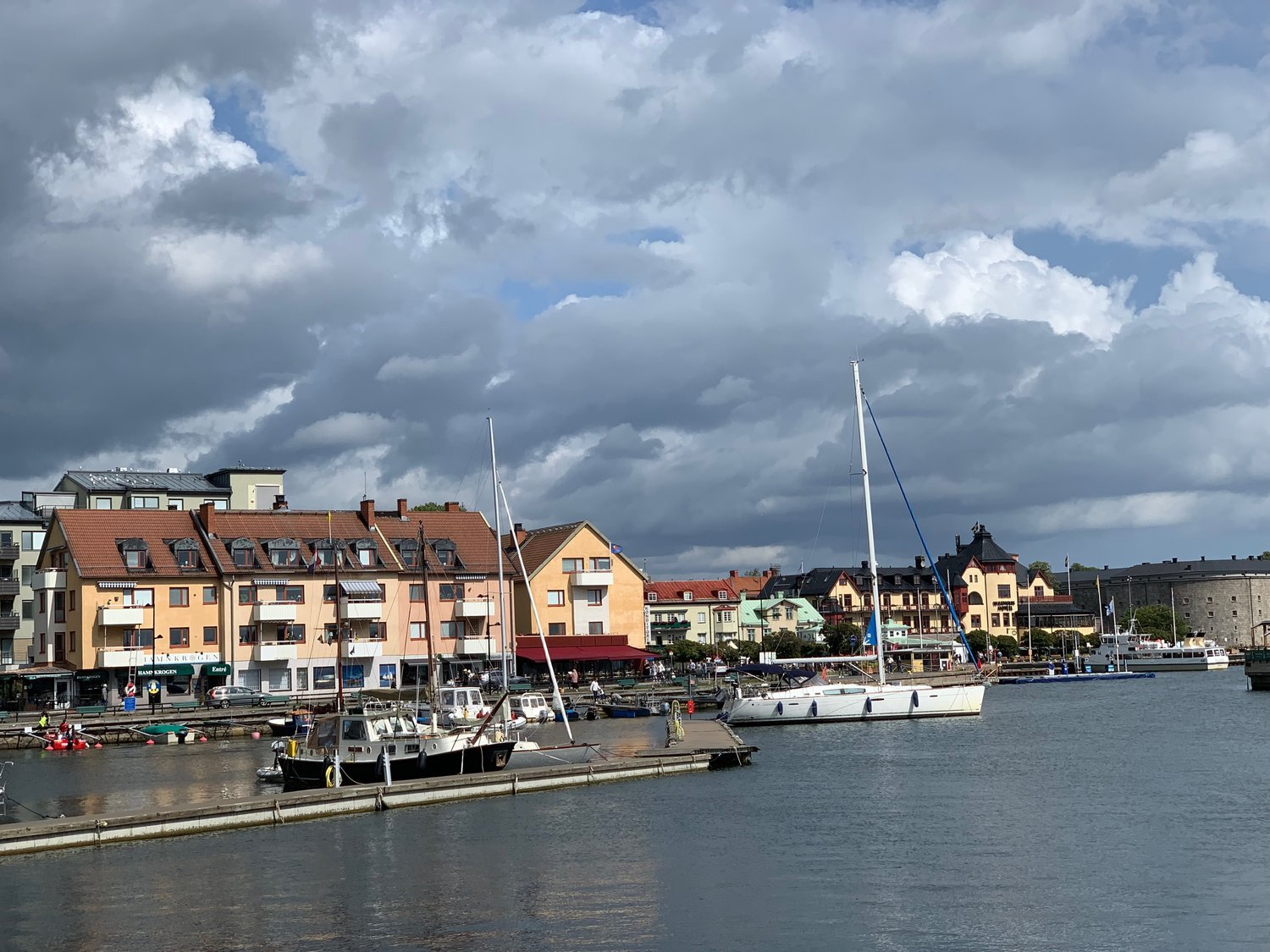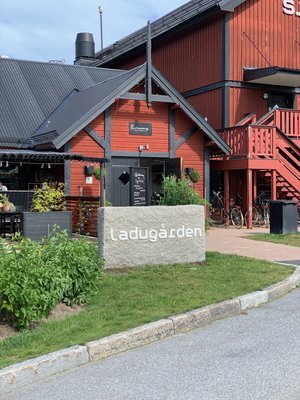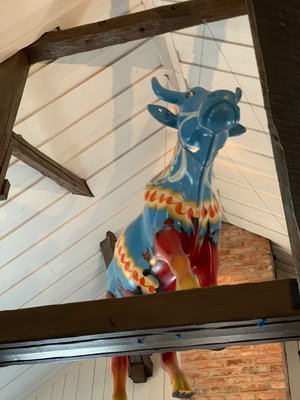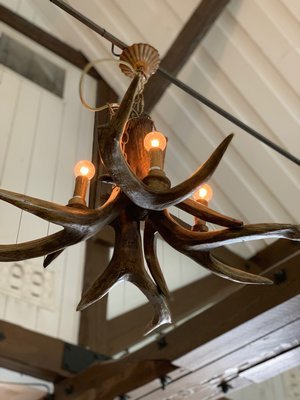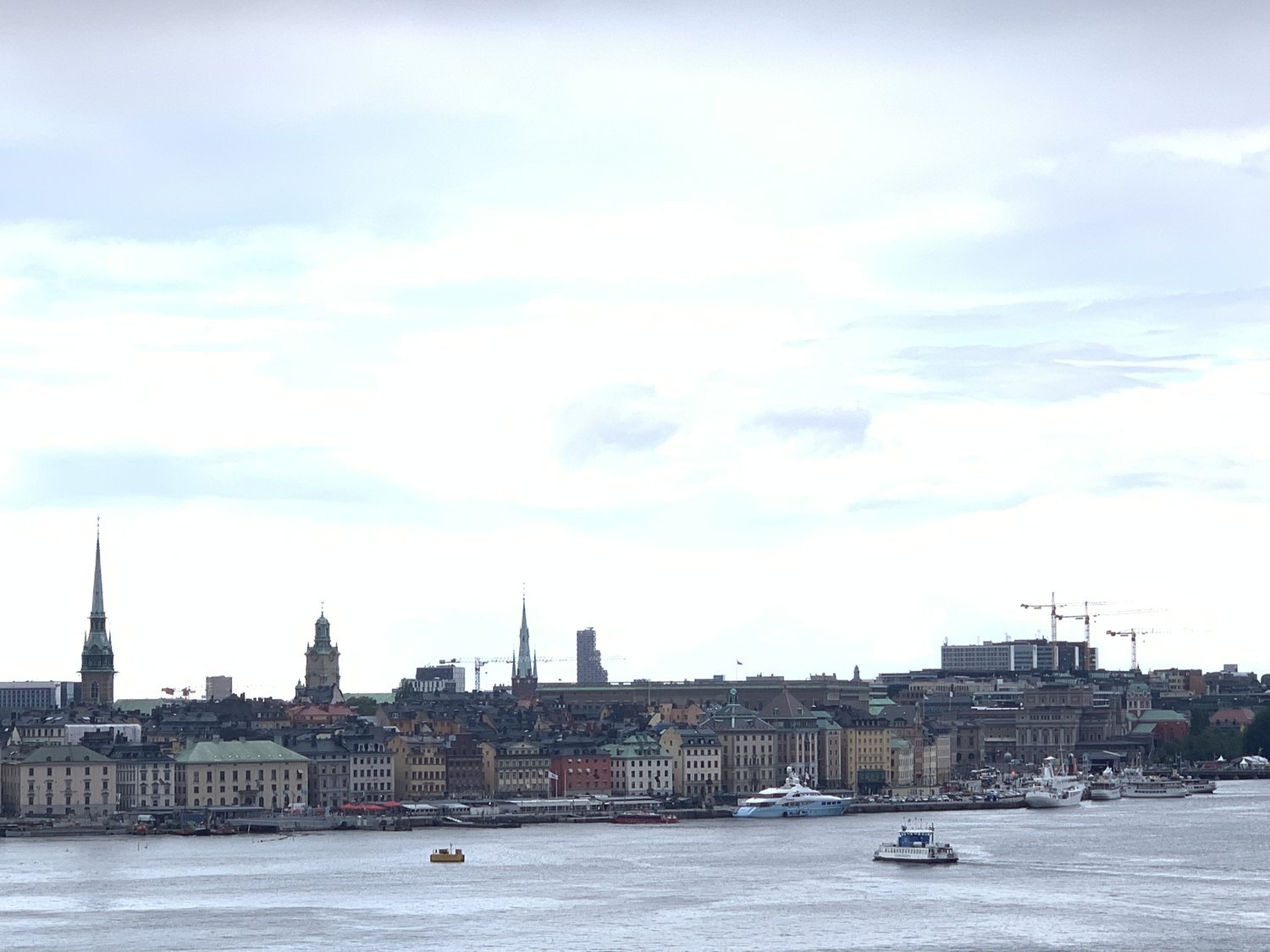CRUISE EDITION: Stockholm & Archipelago , Sweden
Stockholm is home to 26,000 islands and 96,000 fresh water lakes. It houses the rarest and oldest book collection in the world (books that date back to the 1200s are in an atomic blast-proof, 150 meter-deep cellar), has the oldest currency (their bank dates back 350 years), and celebrates all Nobel winners in the areas of sciences and economics. It’s where the wealthy go to do business and where I desperately want to go back and spend a week exploring.
… AND VIRTUALLY EVERYONE’S SUMMER CHATEAUS STARTED SHOWING OFF IN GRAND DISPLAY.
I am on a Princess Cruise and about two hours before we reached port, the city’s archipelago, its wealth, and virtually everyone’s summer chateaus started showing off in grand display.
… as did it’s peaceful sunrise.
Yes, this city (and all of its islands) is stunning and for those of us who have entrepreneur in our blood, it’s inspiring.
SEEING THE CITY - A BRIEF TOUR
The Stockholm tour I purchased (well, what was available at the time of booking), took us through the city and to some of the outlying islands of the archipelago. During our brief driving tour of the city, we saw some of the most iconic buildings of Stockholm City and learned some interesting facts about their economy.
DESPITE THE HIGH TAX RATE, YOU STILL PAY A NOMINAL FEE FOR MOST SERVICES THE GOVERNMENT CONSIDERS “FREE”.
INTERESTING SWEDISH ECONOMY FACTS:
Everyone pays 30% in taxes unless you hit a certain threshold, then it’s 50%.
VAT is 12% for food and 25% for everything else
Benefits you get for the income tax you pay: 390 days off per child born, meals/books/education for elementary and secondary schooling, education at the university (books/living expenses cost money), public healthcare (see below for list of out-of-pocket expenses), and retirement pension and insurances pay outs (depends on what salary was).
Despite the high tax rate, you still pay a nominal fee for most benefits the government considers “free”:
Childcare - flat fee of $190 a month, regardless of how many children you have
Advanced degrees - if you want to be a doctor, you can take out a loan from the state and pay it back at 1% interest, though the loan must be paid back by age 55.
Transportation to get you to/from the city: $210 a month
Doctor visits cost a flat $140 a year - it doesn’t matter how many you make, though you oftentimes have to book 6-months to 1 year in advance for them, as doctors are not allowed to have too many patients or work too much.
If you need medicine, surgery, etc., it will cost you a flat $200 and nothing after that. While that sounds great, if you need surgery, you’re put on a 3-month waiting list - even if cancer-related. Medicine can be generic in brand and/or at a lower dosage than needed to save the country money. While Swedes pay less, they often complain about lack of sufficient, immediate care.
People have the option of paying into private medicine unless they have been recommended to a private hospital - then they pay nothing.
Without getting too political, it’s why a lot of business is done there, summer homes are found there, but the population isn’t vast (its largest island in Stockholm City is home to a mere 140,000 people). It’s still far too expensive to live there full-time and if you’re not planning on having a family, the amount of benefits received for what you pay into is imbalanced.
VAXHOLM
Vaxholm was initially a fortress built in the 1500s to prevent future attacks by naval warfare. Today, it’s a sleepy little town (inhabitants are around 5,000) that not only serves as a gate for all ships that pass through, but also a ferry hub connecting people to 30,000 islands.
SWEDEN USED TO MINE 90% OF THE WORLD’S COPPER, WHICH WHEN REFINED HAS A RICH RED BYPRODUCT THAT CAN BE USED AS A PAINT.
We took a walking tour around the town to learn more about it, as well as some additional “fun facts” about Sweden - most notably what the deal is with the rich red color of so many of the homes. As it turns out, Sweden used to mine 90% of the world’s copper, which when refined has a rich red byproduct that can be used as a paint. This “paint” protects wood, doesn’t require re-painting, though will rub off easily (it can stain clothing).
We were given a bit of time to explore the town before we were to meet back at the bus, which has a small shopping and restaurant area that lines the harbor. We stopped at La Maison for coffee (kaffe) and locally-made sodas, though they make their bread and pastries on site as well! It’s a must-do when you’re there.
VÄRMDÖ - SIGGESTA GÅRD
Our final stop of the tour was taking a motor ferry (they can even shuttle massive tour buses) to Värmdö - a former Swedish military island that wasn’t open to other nationalities until 2006. Now, it houses mostly hotels and resorts along with some residential areas.
We stopped on this island for lunch at Siggesta Gård - a farm from the 1800s-turned resort whose barn was renovated to house Restaurant Ladugården and event space.
This upscale, rustic restaurant served us a traditional Swedish lunch of salmon, fresh-baked bread, salad, potato salad, and apple pie for dessert. With my Celiac, they were very accommodating, serving me tender beef slices with steamed vegetables and roasted potatoes. If you find yourself exploring any of the islands of the archipelago, definitely stop by this for a night or two and take in all this resort as to offer.
GUSTAVSBERG
Another fifteen-minute drive had us on the island of Gustavsberg, which is known for their crystal and porcelain, the latter of which is commonly used in making sinks and toilets.
We made a stop at their outlet stores, one of which I could have spent the better part of a paycheck in - Orrefors. Orrefors is one of two crystal brands they own, the other being Kosta Boda. Due to how much I could physically carry back home with me, I limited myself to purchasing their incredibly popular snowball collection and two ornaments (a tradition we have from every country we visit).
ADDITIONAL SWEDISH FACTS
IN THE SUMMER, NEW DRIVERS ARE TRAINED ON STEEL PLATES SLICKED WITH OIL AND WATER TO SIMULATE ICY CONDITIONS.
On our drive back to the city and sadly, to the ship, we learned some additional interesting facts about Sweden:
You must be 18 to receive a driver’s license and it costs around $2200 USD to obtain one. The cost is due to the extensive training you must go through, which includes learning to drive on the slickest of roads and in other dangerous situations. In the summer, new drivers are trained on steel plates slicked with oil and water to simulate icy conditions. As for their almost half-million moose population, students are required to test their reflexes on a plastic moose obstacle course.
They have one of the most advanced power plant systems in the world. Whatever their inhabitants don’t recycle, it gets sent to large power plants to be burned to heat hot water for the city and its suburbs. In the winter, they have to purchase garbage from neighboring countries to accommodate increased usage.
Their fresh air is due to 75% of the islands, north of Stockholm being pine tree forests
The last time they had a war was 200 years ago - they are now considered a neutral country.
Cruise-friendly day trips:
If you’re coming by cruise ship, there are several cruise-friendly day trips available that are at a fraction of what you’d pay going directly through the cruise line:
Day Trip to Uppsala (7 hours)
Old Town Walking Tour & Boat Trip (3 hours)
Private Castle Drottningholm and Gripsholm Tour (5-6 hours)
Private Guided Tour Inside the Crown: Stockholm Royal Palace (1 hour)
Swedish Church History Half-Day Tour (5 hours)
Vasa Museum Guided Tour (2 hours)
Viking History Tour (3 hours)
